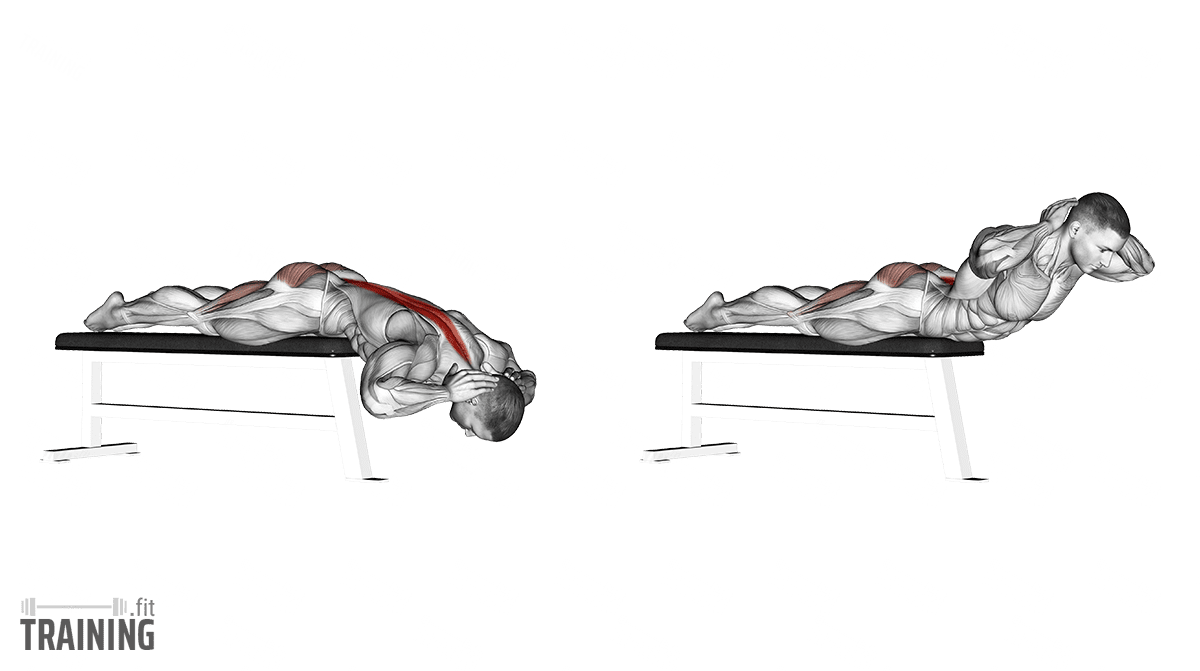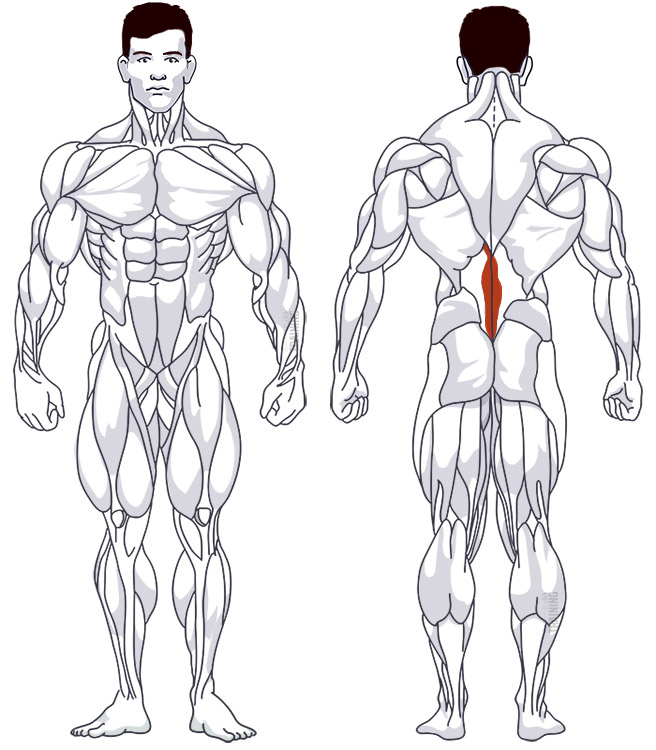Hyperextension on the Bench
Isolation exercise, Free weightsOverview

Main muscles
- Back: Back extensor
(Musculus erector spinae)
Training plans
Hyperextension on the Bench is a suitable substitute for similar exercises in lower back training or as a supplement to various training plans.
Hyperextension on the Bench: Basics and alternatives

Involved main muscle groups:
Hyperextension on the Bench
Performing hyperextensions on a flat bench is an alternative to working out on a hyperextension bench. To do this, you’ll need a training partner to hold your legs, a multi-bench with cushions, or a belt to secure your legs and stabilize your body. The exercise routine is essentially the same as the “normal” hyperextension: You bend and stretch your upper body over your hips, targeting your lower back. It’s an isolation exercise.
The flat bench doesn’t have any particular advantages over the hyperextension bench; it’s just an alternative option.
Other alternatives include doing hyperextensions lying on the floor or on a gym ball. As an alternative compound exercise, you can try deadlifts or Good Mornings on the flat bench.
Correct Execution
As mentioned earlier, you can perform this exercise in three ways:
- Alone on a multi-bench, where your legs can be secured with cushions.
- With a training partner holding your legs. On a regular flat bench, you can’t do this exercise alone, as it’s difficult to maintain balance.
- By securing your legs, near your feet, with a belt to the bench.
The specific method you choose depends on the equipment available to you. The first option on the multi-bench is described below.
Video Tutorial
Step-by-Step Instructions
Lie face down on the multi-bench, with your legs pointing towards the leg cushions.
Slide your body forward so your hips are at the edge of the flat bench. Use your hands on the floor to support and stabilize your upper body while hooking your feet into the cushions.
Engage your core, raise your hands, and place them behind your head or neck. Your upper body should be in line with your legs. Keep your back straight with a slight arch. You’re now in the starting position.
Slowly and with control, lower your upper body. Maintain a straight back and avoid rounding it.
Pause briefly in the lowered position before raising your upper body back to the starting position with the same control.
Common Mistakes
As with other hyperextension exercises, overstretching the lower back is a common error. End the stretching movement when your legs and upper body form a straight line. Resist the urge to create a pronounced arch in your back to lift your head higher, as this can harm your back over time.